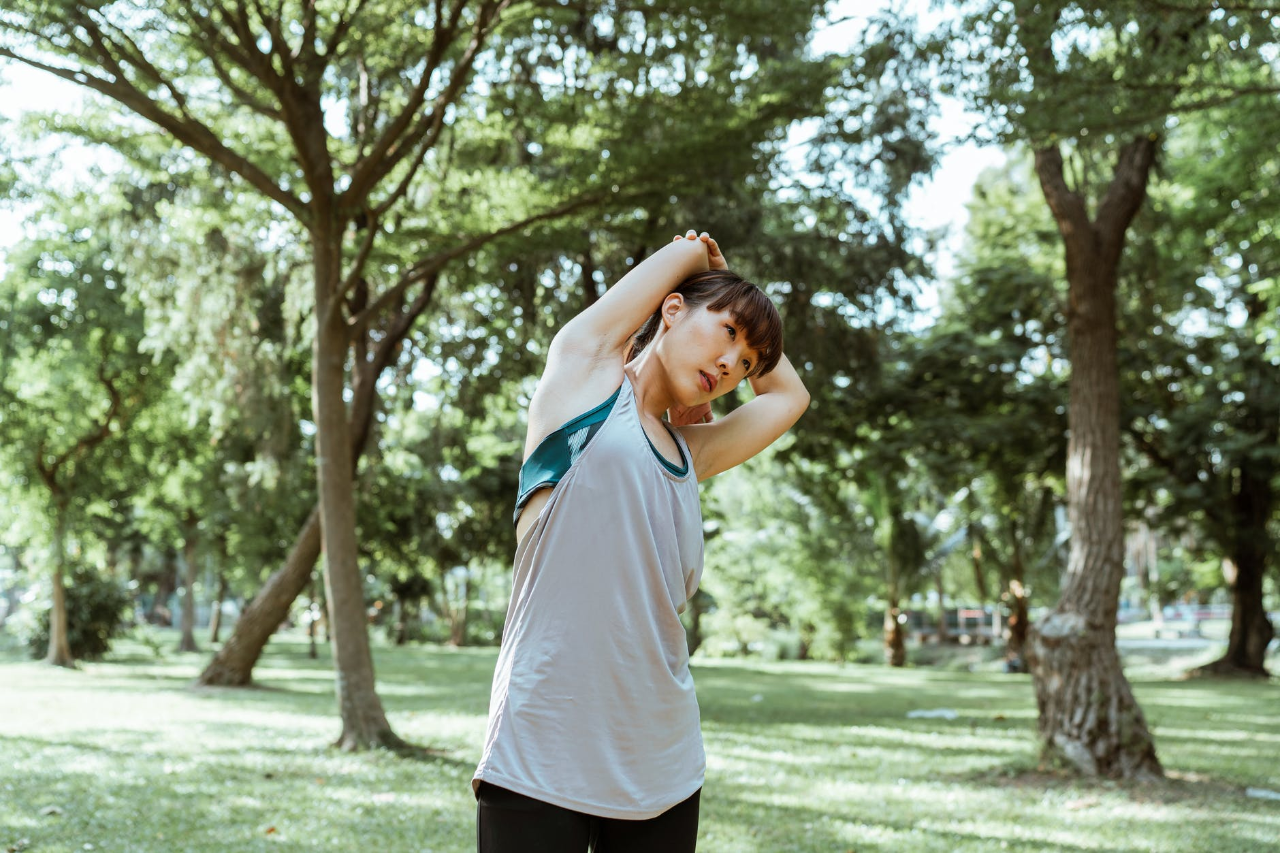
The subject of Posture is a strange one, to say the least. It’s basically just your positioning habits, and never what people think. It doesn’t “stick” indefinitely, and can change with each step you take. Yes, your body will adapt/mold to your common positions (i.e. desk posture), but there is something you can do about it immediately, and that’s educating yourself on the single Pre-Requisite to any posture “fix”. Without it, you have no chance at “fixing” your posture!
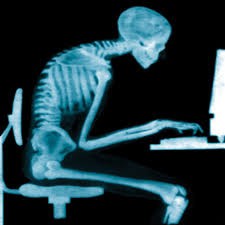
In this article, you will learn that if you don’t do this 1 thing, then any “posture exercises” you are doing, such as upper back pulling work, might just make those exercises do more harm than good…
What is Posture?
Scientific Studies will say this:
“Posture is a state of skeletal and muscular balance and alignment that protects the supporting structures of your body from progressive deformity and injury (Britnell et al. 2005). Whether you are erect, lying, squatting or stooping, good posture allows your muscles to function with maximum efficiency. With good standing posture, your body’s joints are in a state of equilibrium with the least amount of physical energy being used to maintain this upright position (Kritz & Cronin 2008)”
Textbooks will also show you something this, every time:
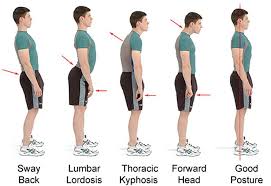
This is standing posture, and can’t be “corrected” in many cases overnight. Why? First off, if you are the guy in the middle, unless you stop sitting like that all day at the computer, there are no magic strength exercises (i.e. “face pulls” and rowing variations) that will make you look like the guy on the far right. He has a high degree of bad posture, so quick fixes are a no-go. Second, the guy in the middle likely has a fair degree of poor postural habits, and how long he endures those habits will determine how long that it might take to “fix”. That goes for any of the pictures–your positional habits will play a big role in how your body molds/adapts.
Nothing new there…
Not so “Dangerous”
The crux of the matter is that detrimental postures occur when things are out of place, which is obvious, but this might not be as detrimental as you think unless you are adding activity and load. If you plan on being a couch potato your whole life, then your crappy posture won’t be as detrimental physically as someone who wants to lift weights or play sports. Having severely rounded shoulders will certainly affect things like your respiration, as well as your dating life, but if you don’t exercise or lift weights, it likely won’t cause severe orthopedic issues, at least not for a long time. Still undesirable, but nothing to obsess over just yet…
Or Is It?
On the other hand, your crappy posture will be way more detrimental and likely cause a lot of orthopedic issues if you do lift weights and try to force certain positions under load, as the A, B, C’s of most exercises will be out of whack. And I’d argue that most folks in the gym are using poor posture in most exercises. These people are getting good at sucking (it’s a real thing) and speeding up even worse posture!
So, how can we start to “fix” ourselves and acquire a more efficient posture?
Recall the A,B,C’s of Exercise Selection article I wrote a while back—Alignment, Breathing, and Control. Posture falls into all 3 of these. Poor alignment is usually obvious visibly, and if you are in poor alignment, regardless of the activity you are doing, breathing will also be altered, for reasons I will explain below, and control and stability of whatever movement you are about to do will almost certainly be off! That damn kinetic chain screwing your world up again!
*Kinetic Chain in English = “Everything’s Connected” (which is also the theme of a really cool show on Netflix called Dark, I might add…)

First Things First: Thoracopelvic Canister
Meet your “TPC”, as we will call it, as writing “thoraco-pelvic canister” is just plain annoying. In short, this is your ribcage, spine, and pelvis, and all the muscle and tissue that surround and attach to them. Having them “face” each other is key to proper breathing patterns, as it affects the distribution of the air. Here is a picture of proper TPC alignment while standing, ensuring that the trajectory of your respiratory cycle is a nice straight road and not a curvy maze like Holmdel, NJ side-roads, which are scaaaaary….
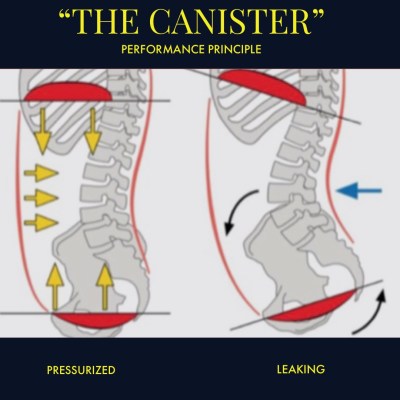 Kind of a big deal…
Kind of a big deal…
Notice that on the picture on the left, the bottom of the ribcage faces the top of the pelvis, as if they are staring into each other’s eyes. That is the position you want to live in most of the time, as it ensures your diaphragm is in proper resting position. As mentioned, the diaphragm is critical for proper respiration, and as you know that is the “B” in the A,B,C’s of Exercise Selection that determines if your exercise is safe or not. Without that, your exercise is likely doing more harm than good! The A affects the B, which affects the C, and what’s crazy is the order doesn’t matter. If your control is off, your breathing and alignment will be off, for example.
Know this: Without the TPC aligned correctly, everything you do in a postural sense will likely be off. Why? Because your TPC is in the middle of your body and affects all above and below. This is not rocket science folks…there is a reason it’s called the “core”.
Why is this position so damn important?
For the diaphragm to function properly, it needs to open like a reverse parachute so the air can flow in a 360 manner. That is beyond critical in life! I will write a whole article on that another time. Ideally, this is how it would work: You breathe in, it lowers and expands the ribcage; you exhale, and the ribcage should return to it’s starting position, staring at the pelvis’s eyes. The picture below is the diaphragm right after an inhalation, with the parachute open for business…
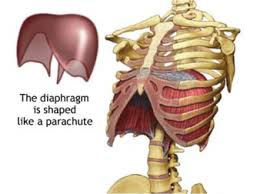
Here is a quick hack to ensure you are doing this:
*As an aside, this positioning won’t happen 100% time. For instance, there are many exercises where this get’s thrown off purposely, such as something like a reverse crunch, below, where I want your pelvis to rotate backwards to train your abdominals to get chiseled. But for the most part, you do in fact want that TPC positioning set up correctly for proper Alignment, Breathing, and Control.
Anyway, here is an example of this in practice: Take this guy—he wants to do some deadlifts today.
In the 1st and 2nd picture, his TPC is out-of-whack—which will put unwanted stress all throughout his kinetic chain; whatever muscles he thinks he is training, he is not, at least in the balance he thinks he is. While both of those positions are the opposite to each other, they are both unsafe under load. Because he is adding load, this will also create faster adaptations; in terms of posture, his brain might think this IS proper, considering he is putting his body in this position so often, so it might mold and stay like that. A lot of athletes who play at high levels use that 2nd picture posture all day long, and have a tough time relaxing in life since exhaling properly is now harder to do!
In the 3rd picture, his TPC is right where you want it to be—providing Alignment, proper Breathing atmosphere, and (hopefully) good Control—as long as he knows how to perform the movement!
Here are 2 examples I see daily:
Classic Ab Wheel exercise
This is what I usually see: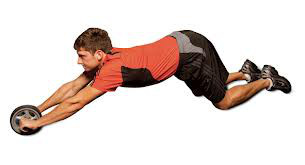 Gross…..I feel bad for his back. He probably thinks he is being a badass and getting a 6 pack, too…
Gross…..I feel bad for his back. He probably thinks he is being a badass and getting a 6 pack, too…
The fix: Get your CANNISTER level. Here is a picture of what I mean with this exercise: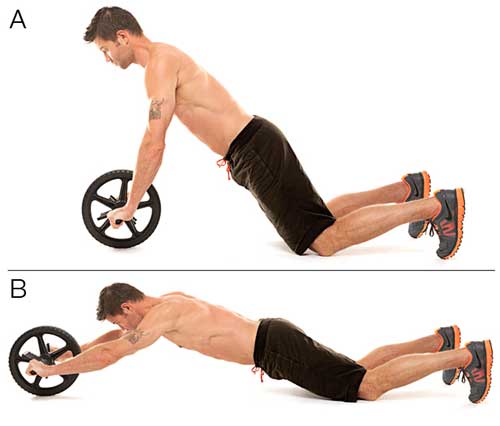
All is well with the TPC in Alignment! Whoop Whoop! This exercise, btw, trains those muscles that help keep your TPC in proper alignment. This is not an “ab” exercise like a stomach crunch, as most think. Get this exercise right, and I bet you have an easier time keeping your TPC alignment right when doing other things.
Overhead Press:
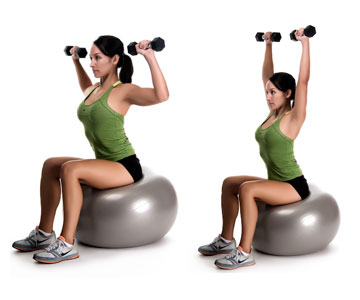 Notice the non-aligned TPC. Might look good in a mirror, but the TPC is off, which means other things are off, guaranteed. In this case, her abs are being useless and are begging to help…and there is no way she is breathing right directionally!
Notice the non-aligned TPC. Might look good in a mirror, but the TPC is off, which means other things are off, guaranteed. In this case, her abs are being useless and are begging to help…and there is no way she is breathing right directionally!
Key Point: TPC is the Pre-Requisite for any Postural “Fix”
Trust me on the TPC alignment; any good Physiotherapist will tell you the same thing. If this canister isn’t positioned right, everything else in the “Kinetic Chain” – meaning the rest of your connected body, will likely be altered.
So when we talk about “fixing” posture, this is Step 1, and a Pre-requisite for any further interventions with your posture.
You: “But Brian, I saw on Youtube that this cool neck exercise fixes your forward head, and pulling a band towards my face fixes my forward shoulder!”
Me: They might help, if and only if you fix your canister first! I hope this concept is beaten into your head now.
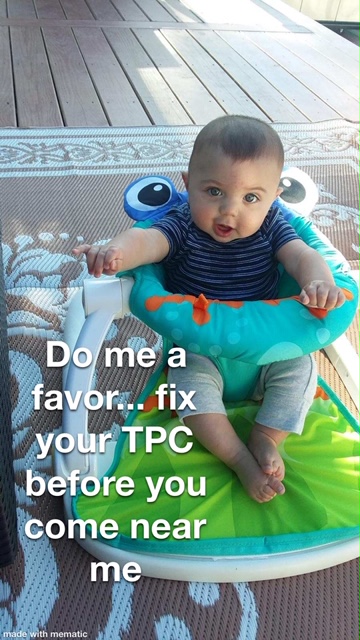 Charlie Mo’ actually says this to me
Charlie Mo’ actually says this to me
So we are going after postural strategies that are optimal, sustainable, and efficient, regardless of what we are doing, be it sitting at a desk, or playing golf. Those 3 terms are exactly what happens with proper A,B,C’s, and the “A” for the TPC is the most important alignment in the body, as you hopefully are convinced of at this point.
We want to create length in our spine. The cue I use for helping someone “feel out” good posture is simply “Tall and Wide”…..It’s that simple. Get as tall as you can, and make your shoulders wide, without forcing them wide. It has to be subtle…but as you can imagine, that is easier said than done.
Someone way smarter than me
Here is an easy exercise by the way-smarter-than-me Dr. Evan Osar explaining exactly how to do this. You are using a wall, “pulling it apart”, which makes you tall and wide. Then it’s up to you to use that position when you are living life.
This exercise helps you feel what all of this feels like—all movement is learned by feel, so you need to get into the right position, and then live there for a while and do things in that position. Practice makes perfect.
This creates width in the shoulders, which will have the shoulder blades right where you want them (which if you are interested, means they are tilted slightly posterior and in slight upward rotation). Tall and Wide folks….tell your friends
Recap:
- When dealing with “Alignment”, as part of the A,B,C’s of Exercise Selection, ensure your TPC is aligned above all else, as it sits in the middle of your body, and will affect positioning above and below it. Totally a big deal…
- Find exercises, like the video above with Dr. Osar, that help you feel what good posture feels like, and then simply try to replicate that posture as much as you can. Tall and Wide is the key..but easier said than done. You really have to find the right exercise or exercises that will help you remember what “tall and wide” look like.
- Don’t obsess over “perfect posture” unless you are lifting weights or doing something intense. Load and intensity magnify and speed up orthopedic issues. On the other hand, using poor postural habits all day, like at a computer, will certainly affect your resting posture, and won’t get you many dates. But dangerous? Not really. Why would it be? You aren’t loading anything! Do it over 30 years, then maybe dangerous…
If you want some help in your exercise programming, please schedule a complimentary consultation with me…. It could be as simple as a 10 min chat on the phone, Zoom, or just email if that’s your thing. Visit https://www.trainerize.me/profile/brianmahoney/Brian.Mahoney to schedule!



